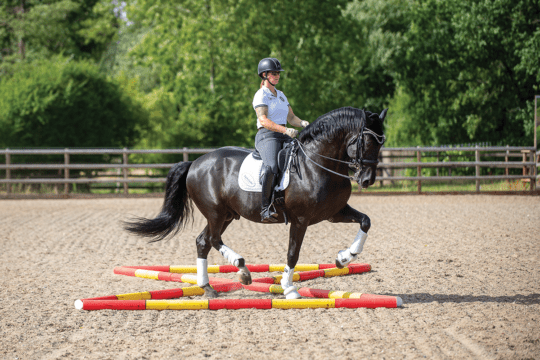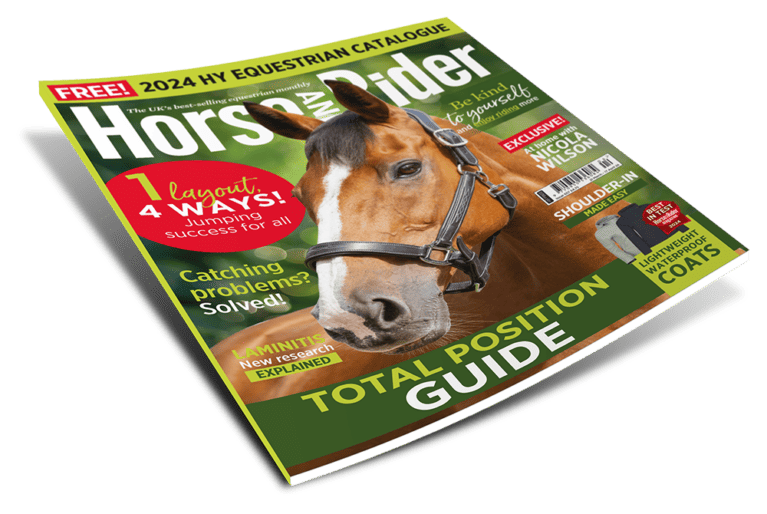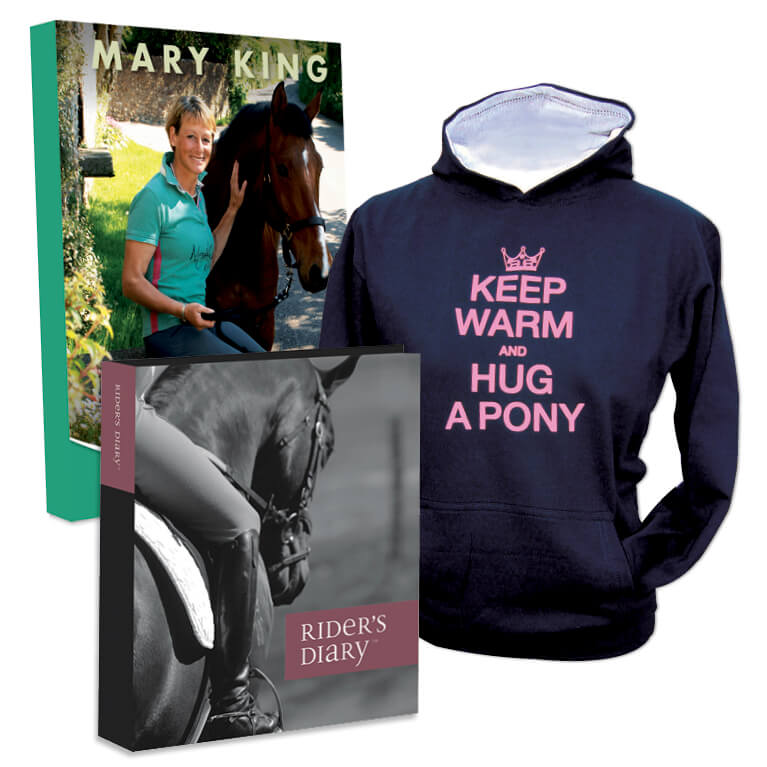Featured Professional

Sandy Phillips
Sandy is an FEI judge for eventing and dressage, and trains horses and riders of all levels.
International judge and dressage rider Sandy Phillips shows you how to improve your horse’s transitions for a flawless test
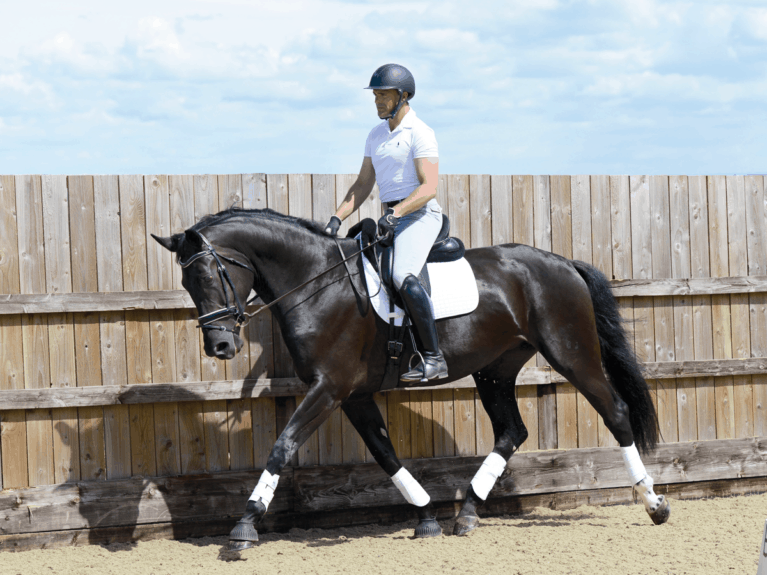
Transitions are something that can be worked on and improved at all stages of training, from just backed to Grand Prix. You need to adjust the degree of difficulty to suit the level of the horse that you’re riding, but at any level, you can refine the amount of control and nuance. Transitions between and within gaits are often ridden incorrectly, with too much hand and not enough seat. By simplifying the way you ask for a change in stride, you can cut out a lot of the confusion and mixed signals that over-complicate many riders’ schooling sessions.
Since the previous article, you’ll have been practising identifying and influencing your horse’s movement in walk using your seat. Here are the skills you should have in place to progress to this lesson…
- sitting in the middle of your horse with your hips relaxed
- correctly identifying when each leg leaves the ground
- walking over poles to teach lift
Half-halts
The half-halt is a concept that most riders over-complicate, but the key is to keep it simple. The art of being a good rider is to ride so that your horse follows your movement, rather than the other way around – it’s about influencing him, rather than being a passenger. As your seat becomes more nuanced and able to identify your horse’s movement, your hips can start to play a more active part in controlling that movement. In walk, experiment with stopping and starting the motion of your hips, and take note of how that affects your horse’s stride. Stop your hips, then move them, stop them, then move them. You’ll start to feel your horse coming through from behind and engaging. That’s a half-halt without relying on your hands.
Being able to change the way your horse is moving by doing something as simple as stopping the motion of your hips means that you’re the leader. You’re not only slowing your horse down, but also engaging him so that he shortens his body and brings his hindquarters underneath him. The ground he stands over then becomes more of a square than a rectangle, because you’ve encouraged him to compress himself.
The same thing can be done in trot. Rising serves more purpose than just freeing up your horse’s back – it’s also a good influencing aid if used properly. You can slow down your rising to encourage a slower, loftier trot or speed it up to allow your horse to step out more.
Core control
To ride a half-halt without using your hands, your position and balance must be correct. The ideal position is such that if your horse were to disappear from underneath you, you would land on your feet. Can you stand in the stirrups without falling ahead of or behind the motion? Your leg must be underneath your body to be able to do this. If it creeps forward then you’ll be behind your horse’s movement and will land near the back of the saddle. If it falls back then your weight will move forward, weighting your horse’s front end and disengaging him.
Core control will help you to find and maintain your position, so consider adding some strength-building exercises to your fitness regime.
Top tip – Practice schooling on a variety of surfaces and uneven ground. It’s hard work to keep your horse in balance and in front of your leg when you’re going up and downhill, but once you’ve mastered it you’ll give yourself an edge at competitions, where the footing is generally flat and level.
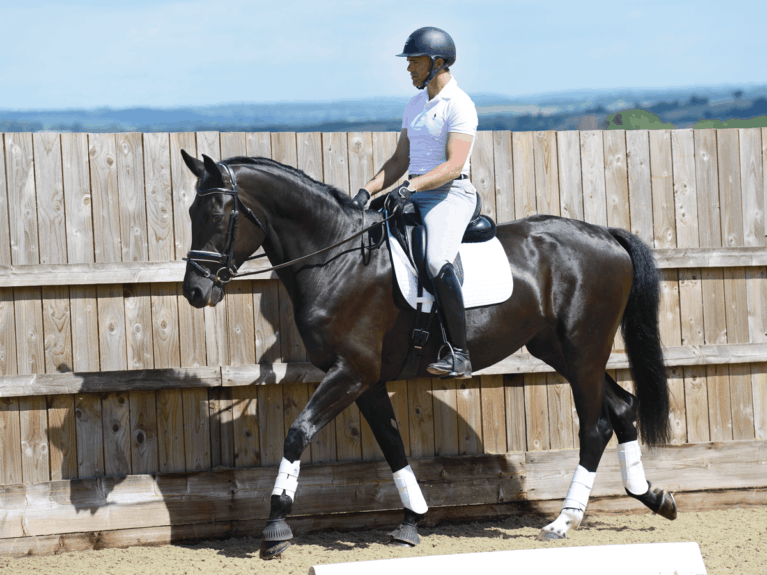
Keeping him in balance
If your horse is naturally long-striding, you’ll need to help him maintain his balance. He has to learn to work first from behind up to his front end, rather than taking the contact and backing off it. You always need to keep in mind where his haunches are – they should be underneath him and if they’re not, then he’ll find it very easy to lose balance and fall onto his forehand.
If you have to maintain his balance with your hand, bring the trot back almost to walk so your horse’s hindlegs step further underneath him. Then, just before he actually makes the downward transition, ask for canter. This gives him enough time to manage the size of his stride and engage – if you ask him to canter from a big trot, he won’t be able to do it.
Keeping him engaged
As a thinking rider you should be constantly analysing and evaluating how your horse is coping with an exercise. If he’s comfortable with what he’s working on and prone to complacency, you’ll need to recognise this and ask him to engage and step underneath himself more.
For horses like this, I use leg-yield into canter. Use your rising to make the transition – keep him active and going forward, while keeping your body relaxed. You shouldn’t be pumping with your body, but do encourage the forward motion. Come down the three-quarter line, keep your hands consistent throughout and use your inside leg to push him over into a few steps of leg-yield, then pick up canter as you reach the track. This has a two-fold effect – it engages his hindquarters and highlights any lack of strength you may have through your core. If you’re not strong enough, you’ll end up balancing on your hand.
Top tip – I never ask young horses to collect. They certainly need to learn the half-halt so that they can rebalance, but don’t try to shorten his stride excessively or ask for an advanced degree of engagement. This will come in time.
Pressure and release
In general, I don’t carry a schooling whip when I ride, although I keep one to the side so I can pick it up if needed. I want my horses to learn to be sensitive to my leg, so I school them to move forward from pressure, which is then released as a reward.





